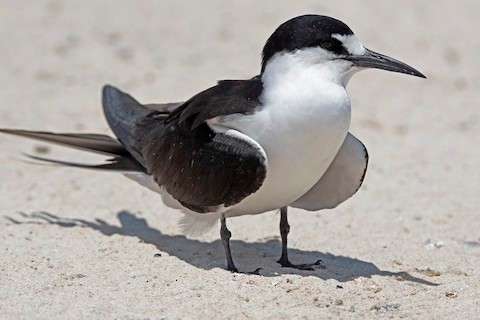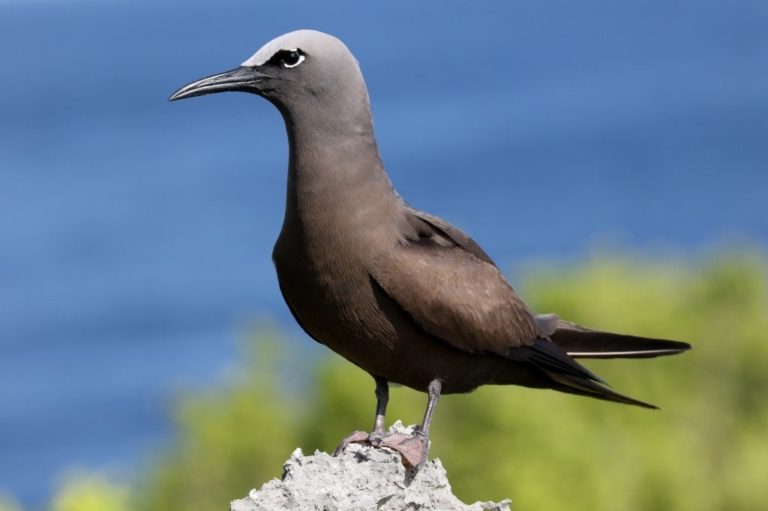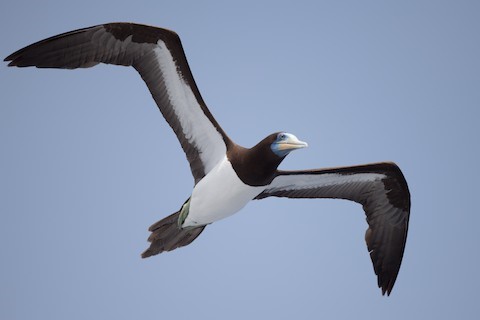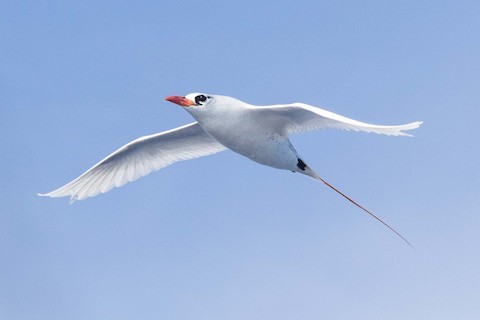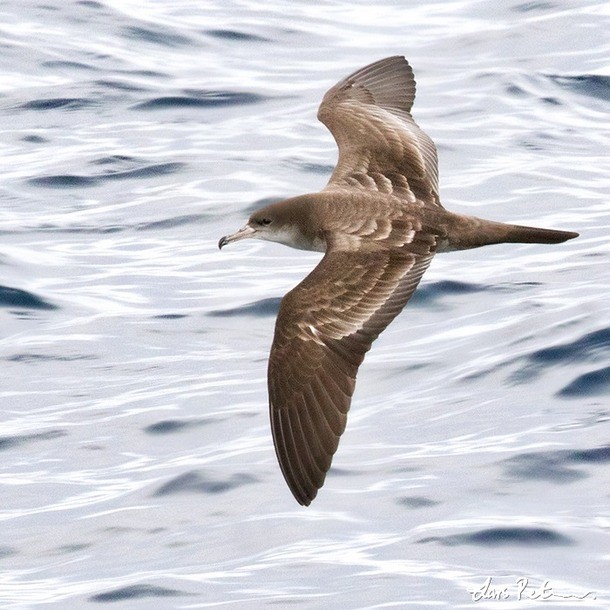Makapu’u Point, Oahu, Hawaii

Makapu’u Point is within view of Manana Island, the largest colony of Brown Noddies and Sooty Terns in the main Hawaiian Islands. It is also one of the most conveniently accessible sites in Hawaii for seeing several other seabirds, including: Yellow-billed and Red-tailed Tropicbirds, Wedge-tailed Shearwater, Great Frigatebird, Red-footed, “Forster’s”, and Masked Boobies, and Common Fairy-Tern, and offers the possibility of Bulwer’s Petrel, Christmas Shearwater, “Hawaiian Noddy”, and Gray-backed Tern.
Orientation
Directions
Makapu’u Point is at the eastern tip of Oahu, along the Kalaniana’ole Highway (a.k.a. Highway 72), about 20 minutes’ drive (15 miles) from downtown Honolulu, or 30 minutes (21 miles) from Daniel K. Inouye International Airport.
From the Airport. Take the main freeway, H1, east into and through downtown Honolulu. After about ten miles it will slim down and become Highway 72. After about nine more miles it will bend north toward prized beaches at Waimanalo and Kailua, but first it goes through the Makapu’u Point area.
About one mile after the northward bend, there will be a side-road on the right that leads to the Makapu’u Point Lighthouse Trail, which lies within the Kaiwi State Scenic Shoreline. Another 0.2 miles north, another sideroad on the right goes to the Makapu’u Overlook. A half-mile farther brings you to the northern access to Makapu’u Beach Park (closest view of Manana Island).
Birdfinding
Makapu’u Point is one of the better places on Oahu to observe seabirds, due mainly to two factors: (1) its prominence as a headland jutting into the ocean and (2) its proximity to the large breeding colony on Manana Island and the much smaller colony on Kaohikaipu Island. There are three conveniently accessible vantage points, each with its own advantages: Makapu’u Lookout (most convenient); Makapu’u Beach Park (closest to the seabird colonies); and Makapu’u Point Lighthouse Trail (best views of open ocean).

Species consistently present during all or most of the year include: Red-tailed Tropicbird (mostly early January to mid-September), Wedge-tailed Shearwater (mostly mid-March to early November), Great Frigatebird (year-round), Red-footed Booby (year-round), “Forster’s Booby” (year-round), Masked Booby (mostly January to October, but scarce in June and July), Common Fairy-Tern (mostly February through October), Brown Noddy (mid-February through September), and Sooty Tern (mostly January through August).
Additional species that can sometimes be found include: Yellow-billed Tropicbird (a few year-round), Laysan Albatross (occasional, mostly January to March), Bulwer’s Petrel (a few breed locally, seen mostly around dusk), Sooty Shearwater (mostly April-May), Christmas Shearwater (a few breed on Moku Manu), “Hawaiian Noddy” (a few breed locally, but vastly outnumbered by Brown Noddies), and Gray-backed Tern (a few breed on Moku Manu, but vastly outnumbered by Sooty Terns).
Makapu’u Lookout. The most conveniently accessible viewpoint is the Makapu’u Lookout, a popular roadside attraction for drives between Honolulu and the beaches at Waimanalo and Kailua. This is a scenic spot where all sorts of visitors stop briefly. It is well-situated for looking down over the somewhat sheltered waters between Makapu’u Point and the islands. Humpback Whales are seen regularly between November and May, and many visitors are alert for them. Tropicbirds, boobies, Great Frigatebird, and Common Fairy-Tern can sometimes be seen at fairly close range.

Makapu’u Beach Park. The northern parking lot offers the best vantage point for views of Manana and Kaohikaipu Islands, although it is not especially close: about one mile from Manana and a half-mile from Kaohikaipu. Its proximity to these nesting islands is sufficient to make it the best location on Oahu for seeing Brown Noddy and Sooty Tern, and probably the most accessible location that offers a somewhat realistic prospect of observing a Gray-backed Tern—though this species is so dramatically outnumbered by the hordes of very similar Sooty Terns that finding one requires either serendipity or extreme dedication.
Manana supports about 20,000 nesting pairs of Brown Noddies (~80% of the southeast Hawaiian population), 75,000 pairs of Sooty Terns (more than half of the southeast Hawaiian population), and 12,000 pairs of Wedge-tailed Shearwaters (~15% of the southeast Hawaiian population). Kaohikaipu adds a few hundred pairs of Wedge-tailed Shearwaters.
Nesting in much smaller numbers are Red-tailed Tropicbird (~15 pairs), Bulwer’s Petrel (~20 pairs), and “Hawaiian Noddy” (~15 pairs). Two species more that nest on other islets along Oahu’s eastern coast (mostly on Moku Manu about ten miles north) and might breed at least occasionally on Manana are Christmas Shearwater and Gray-backed Tern.
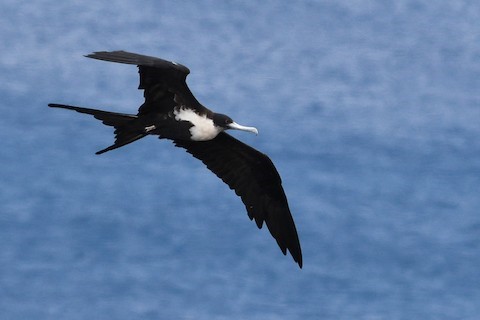
Female Great Frigatebird. © David M. Bell
Makapu’u Point Lighthouse Trail. For those who would like to spend two or more hours exploring the area, the Makapu’u Point Lighthouse Trail is a mostly gentle two-mile hike on the paved road to the lighthouse. There are many vantage points with views of the ocean. Two of the better ones for observing seabirds are about 0.3 to 0.4 miles from the parking area. The closer one faces south, making it more suitable for late afternoon viewing, when many oceanic birds are most likely to approach closer to shore.
Services
Accommodations
Honolulu has an abundance of accommodations concentrated in Waikiki, thirteen miles west of the Makapu’u Point area.
Notes
When to Visit
The season of maximum seabird activity in the area, when all of the regularly occurring species are present in numbers is March to May. The season of least activity and diversity is November-December. The “shoulder seasons” generally offer good diversity, minus two or three species.
Links
